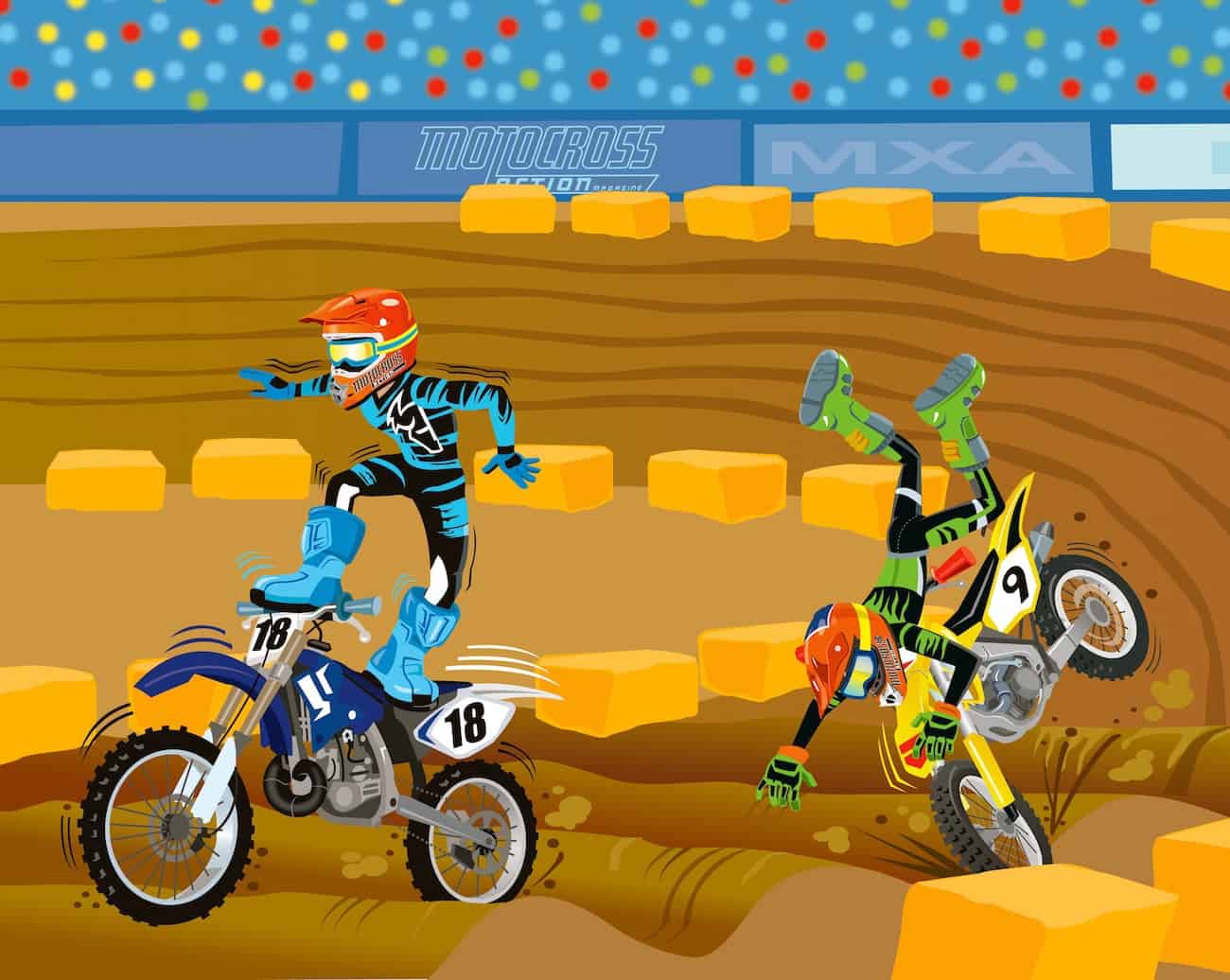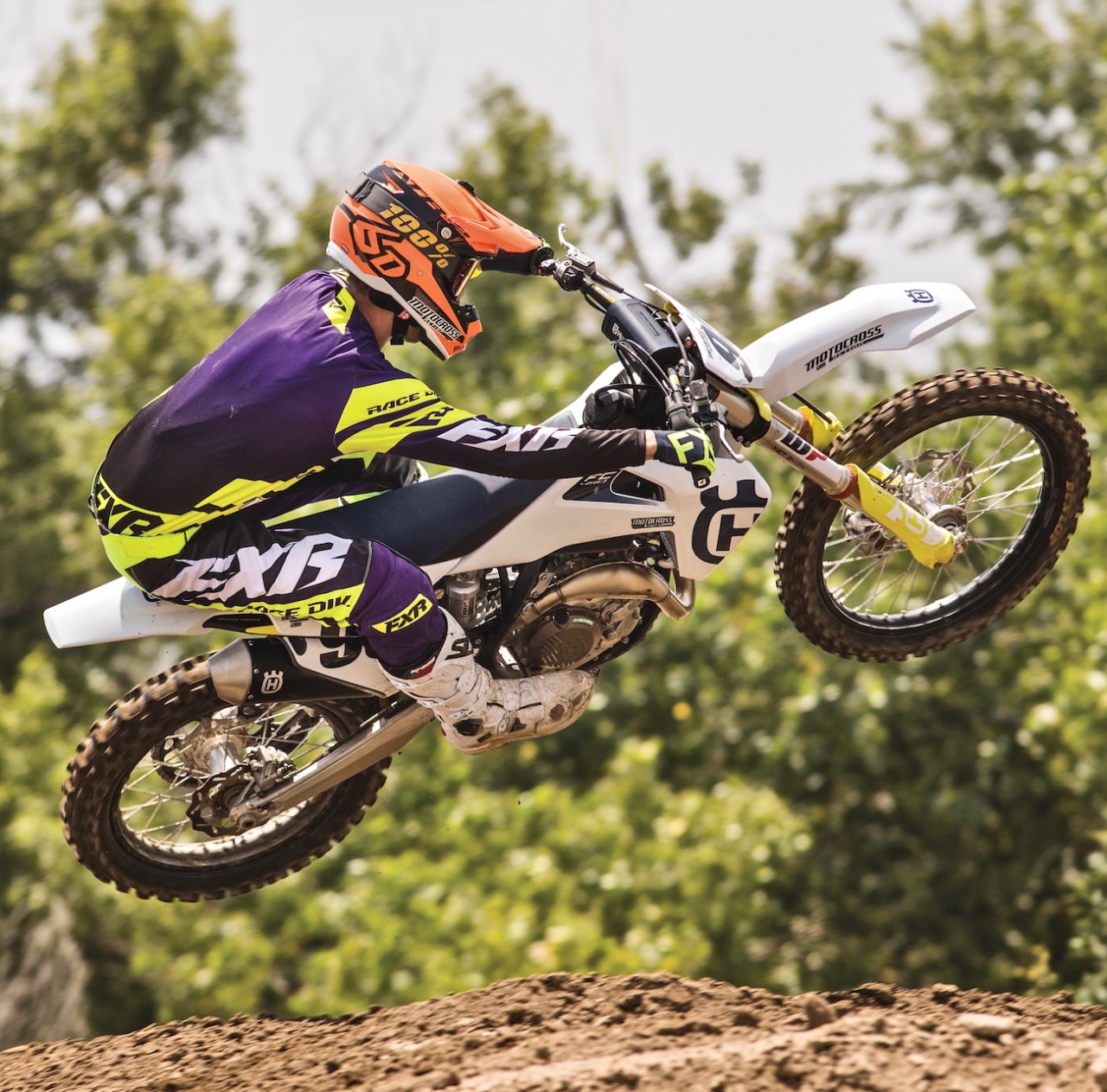BEST SPEED SECRET EVER: STAND UP IF YOU WANT TO KNOW WHAT IT IS
 What if we told you that there is a riding trick that will make you faster overnight — and it is free, cheap and readily available? It’s your legs.
What if we told you that there is a riding trick that will make you faster overnight — and it is free, cheap and readily available? It’s your legs.
Four-time AMA 250 National Champion Gary Jones used to practice with the seat off his bike. Why? Because the proper way to ride a motocross bike is standing up. Without a seat on his bike, Gary was forced to stand up all the time. And, standing is the best way to ride a motocross bike. Most riders position their well-padded derrieres on the saddle and leave them there until a bump blows them out of the saddle. Wrong! Sitting down is the biggest faux pas in the sport. It’s not only wrong to sit down on a motocross bike, it’s also slow.
Nothing is cheaper or easier than standing up. After all, we do it all the time to get out of bed or push ourselves away from the dinner table. Yet, when it comes to motocross, nothing is harder than getting out of the saddle. It takes willpower. It takes strength. And, it takes determination to stand when all those around you are sitting. Standing is the difference between being a hero and a zero.
You don’t need a degree in physics to understand the dynamics of body position. While the actual difference in the center of gravity is negligible between a standing and sitting rider, the change in the control points of yaw, pitch and vertical stability is significant.
WHEN YOU ARE SITTING ON THE SEAT OF YOUR BIKE, YOUR FULCRUM IS YOUR FANNY. WHEN CORNERING, LEANING OR ANGLING THE BIKE, A SEATED RIDER APPLIES PRESSURE WITH HIS GLUTEUS MAXIMUS ON THE EDGES OF THE SADDLE. THIS MAKES THE BIKE TOP-HEAVY.
 Stand up, grip with your knees and let the bike do all the work.
Stand up, grip with your knees and let the bike do all the work.
When you are sitting on the seat of your bike, your fulcrum is your fanny. When cornering, leaning or angling the bike, a seated rider applies pressure with his gluteus maximus on the edges of the saddle. This makes the bike top-heavy. Worst of all, directional changes are made via gross weight changes (much like riding a rocking horse). However, when a rider stands on the pegs, the control point of the bike is closer to the center of gravity; the rider has more leverage, and the pivot point of the chassis is moved closer to the mass of the engine (down by the footpegs). Directional changes come from subtle lean angles applied below the centralized mass of the machine. Instead of tipping the bike into a corner with 180 pounds of dead weight attached to the top of it, a standing rider carves through the turn with slight pressure at the ankles and knees.
Think about the difference between sitting and standing for a second. When you are flying through the air, you almost always stand up. Why? Because you have more control over the pitch, yaw and longitudinal axis of the bike when you initiate those moves with your contact point low on the frame. The same holds true for a bike skimming across rough ground. You can absorb the jolts with your knees and aim the bike with subtle weight shifts from the balls of your feet.
 Standing up is the obvious solution when you need to apply maximum body English to a bike in flight. Guess what? The same is true when the wheels are on the ground.
Standing up is the obvious solution when you need to apply maximum body English to a bike in flight. Guess what? The same is true when the wheels are on the ground.
When you are sitting down, you are a passenger on the bus. If the bike hits something when you are seated, you absorb that energy through your body. By standing up, you change the force dynamics. You allow the bike to bounce between your legs without tossing your body fore and aft. Your ankles, knees and hip joints absorb the energy instead of your spinal column.
Good motocross racers stand up the majority of the time, but there is a right moment to sit down — it is at the apex. The great riders only sit as they enter a corner and then only until they have loaded the suspension and initiated the turn. The action of sitting in a corner is four separate motions — sitting, bending, leaning and standing — blended into a single fluid ballet.
Do you believe that you are already standing up as much as humanly possible? Take this test. Have your mechanic, buddy or spouse use a stopwatch to time the amount of time you stand up per lap. Now, time the fastest guy at your track. If you aren’t standing up within 10 seconds of his time (per lap), you will never get faster.





Comments are closed.